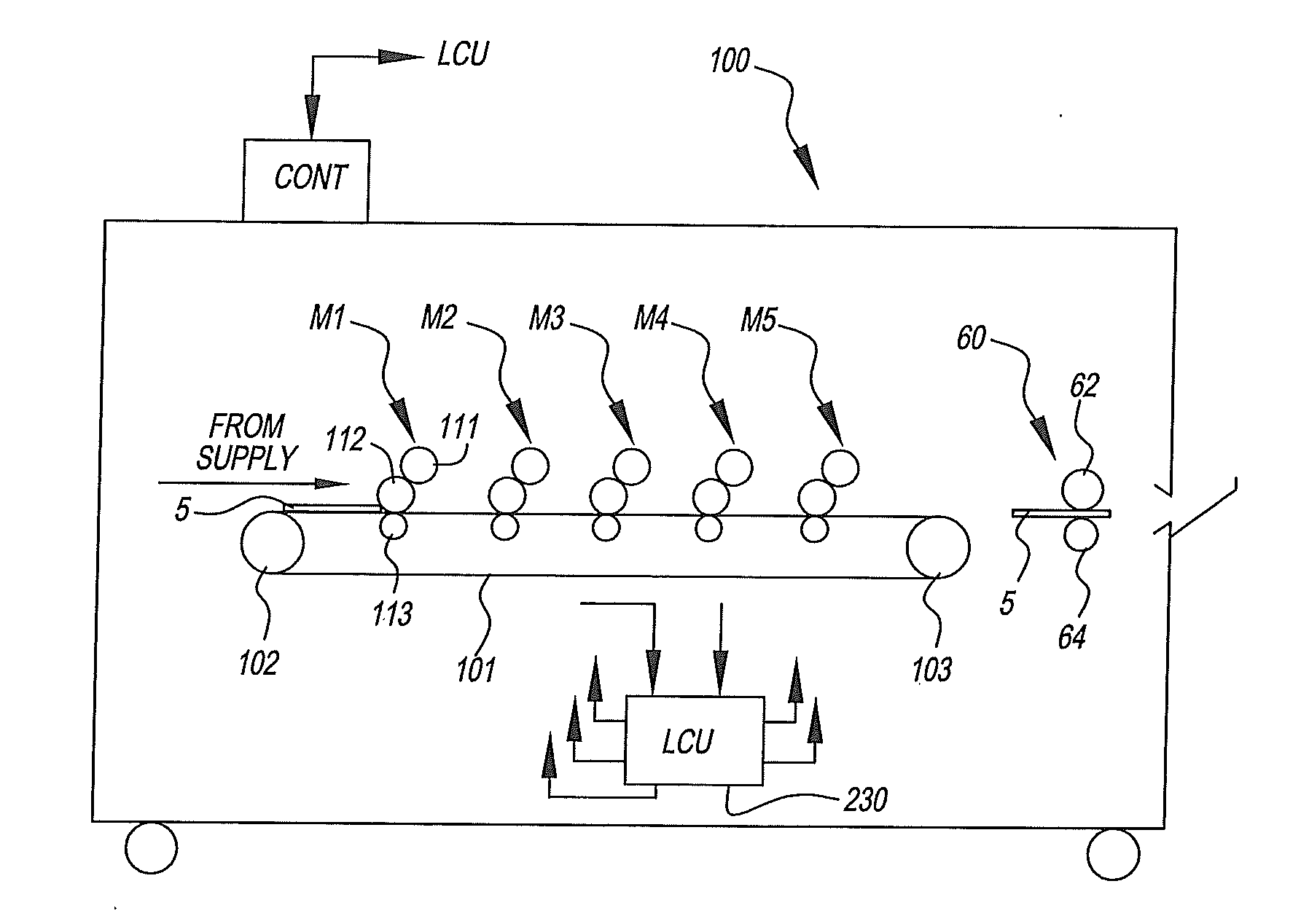Preparing dry toner particles for metallic effect
a dry toner particle and metallic technology, applied in the field of dry toner particles for metallic effect, can solve the problems of imperfect reproducibility of metallic hues, difficulty in reproducing gold tone through such a color mixture, and difficulty in incorporating metallic pigments, so as to enhance the electrostatic charging properties of metallic dry toner particles, enhance the uniform dispersion of non-conductive metal oxide particles, and enhance the effect of luster
- Summary
- Abstract
- Description
- Claims
- Application Information
AI Technical Summary
Benefits of technology
Problems solved by technology
Method used
Image
Examples
embodiment 1
[0188]2. The method of embodiment 1 further comprising: providing hydrophobic flow additive particles having an equivalent circular diameter (ECD) of at least 5 nm on the outer surface of the metallic dry toner particles.
[0189]3. The method of embodiment 1 or 2 comprising: providing the hydrophobic silica particles as flow additive particles on the outer surface of the metallic dry toner particles in an amount of at least 0.01 weight % and up to and including 10 weight %, based on the total metallic dry toner weight.
[0190]4. The method of embodiment 2 or 3, wherein the hydrophobic flow additive particles comprise a metal oxide.
[0191]5. The method of any of embodiments 1 to 4 further comprising:[0192]mixing the metallic dry toner particles with carrier particles to form a two-component dry developer.
[0193]6. The method of any of embodiments 1 to 5, further comprising:[0194]preparing the metallic dry toner particles in a one-component dry developer.
[0195]7. The method of any of embodi...
embodiment 13
[0203]14. The method of embodiment 13, wherein the successive dry coating directly on the non-conductive metal oxide particles is a coating of an oxide of titanium.
[0204]15. The method of any of embodiments 12 to 14, wherein the non-conductive metal oxide particles comprise an organic layer over the dry coating of the oxide of iron, chromium, silicon, titanium, or aluminum, and the organic layer is selected from the group consisting of: (i) an aliphatic acid, (ii) an amide of at least one acid, (iii) a salt of at least one acid, (iv) an olefinic material, (v) a natural or synthetic wax, (vi) a polymer, and (vii) combinations of two or more of (i) to (vi), the organic layer being present in an amount of at least 1 weight % and up to and including 30 weight %, based on total non-conductive metal oxide particle weight.
[0205]16. The method of any of embodiments 1 to 15, wherein the metallic dry toner particles further comprise a colorant.
[0206]17. The method of any of embodiments 1 to 1...
PUM
| Property | Measurement | Unit |
|---|---|---|
| melt viscosity | aaaaa | aaaaa |
| melt viscosity | aaaaa | aaaaa |
| temperature | aaaaa | aaaaa |
Abstract
Description
Claims
Application Information
 Login to View More
Login to View More - R&D
- Intellectual Property
- Life Sciences
- Materials
- Tech Scout
- Unparalleled Data Quality
- Higher Quality Content
- 60% Fewer Hallucinations
Browse by: Latest US Patents, China's latest patents, Technical Efficacy Thesaurus, Application Domain, Technology Topic, Popular Technical Reports.
© 2025 PatSnap. All rights reserved.Legal|Privacy policy|Modern Slavery Act Transparency Statement|Sitemap|About US| Contact US: help@patsnap.com


